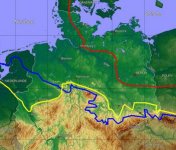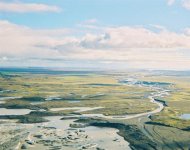davef
Princess
WEZ kits on Gedmatch, K36 values

Wow, the first guy is quite Iberian (WEZ16)
Follow along with the video below to see how to install our site as a web app on your home screen.

Note: This feature currently requires accessing the site using the built-in Safari browser.
WEZ kits on Gedmatch, K36 values

No. Early Slavs were an Iron Age society, not Bronze Age. They had iron-made weapons.
He's not from the battle though, he is the individual from the Neolithic eraWow, the first guy is quite Iberian (WEZ16)
Thanks for posting them.WEZ kits on Gedmatch, K36 values

Why is he part of this study?He's not from the battle though, he is the individual from the Neolithic era
NoThanks for posting them.Are the red/bold and normal kit numbers meaning two groups of people? Classified according to isotope level? Or supposed West/East division?
Ok. Do you know which samples could potentially belong to different groups of warriors according to strontium and lead level?NoSimply some were copied by me directly after upload so the font was red in Gedmatch. I should change it I know.
I found it and made two sets based on low and high strontium level. The two groups turned genetically almost identical. The invaders where from close by. Same general population. Probably a power struggle within one ethnic group.No. I don't check it. Maybe it is in PDF suplemental? https://publications.ub.uni-mainz.de/theses/volltexte/2017/100001279/pdf/100001279.pdf
| High Strontium | Low Strontium | |||
| Germany, Tollensee Valley | LBA, 1.25kya | Germany, Tollensee Valley | LBA, 1.25kya | |
| Run time | 2.52 | Run time | 2.67 | |
| S-Indian | 1 | S-Indian | 1 | |
| Baloch | 2 | Baloch | 4 | |
| Caucasian | 6 | Caucasian | 9 | |
| NE-Euro | 56 | NE-Euro | 53 | |
| SE-Asian | 0 | SE-Asian | 0 | |
| Siberian | 1 | Siberian | 0 | |
| NE-Asian | 0 | NE-Asian | 0 | |
| Papuan | 1 | Papuan | 0 | |
| American | 0 | American | 1 | |
| Beringian | 0 | Beringian | 0 | |
| Mediterranean | 29 | Mediterranean | 29 | |
| SW-Asian | 2 | SW-Asian | 1 | |
| San | 0 | San | 1 | |
| E-African | 0 | E-African | 0 | |
| Pygmy | 0 | Pygmy | 0 | |
| W-African | 1 | W-African | 1 |
| Average | Wez | M107790 | I0118 | M453254 | Rise154 | T253390 | I0806 Rib-DF27 | F999954 | Rise569 | T005824 | Sunghir6 | |||||||||||
| Germany, Tollensee Valley | LBA, 1.25kya | Germany LN | CW like | Unetice EBA K1a4a1 - | 3.9kya | Germany, Quedlinburg | 2431-2150BC Bell Beaker | Czechy, Brandysek | 1,400 ya | Russia, 200 km NE from Moscow | 1040-1220 AD, Slav | |||||||||||
| Run time | 2.63 | Run time | 11.67 | Run Time | 4.06 | Run time | 4.05 | Run time | 9.14 | Run time | 13.62 | Modern North German | Modern Polish | |||||||||
| S-Indian | 1 | S-Indian | 1 | S-Indian | - | S-Indian | - | S-Indian | - | S-Indian | - | S-Indian | 0 | S-Indian | 1 | |||||||
| Baloch | 4 | Baloch | 12 | Baloch | 14 | Baloch | 13 | Baloch | 7 | Baloch | 7 | Baloch | 9 | Baloch | 7 | |||||||
| Caucasian | 7 | Caucasian | 7 | Caucasian | 4 | Caucasian | 9 | Caucasian | 8 | Caucasian | 11 | Caucasian | 8 | Caucasian | 10 | |||||||
| NE-Euro | 54 | NE-Euro | 49 | NE-Euro | 54 | NE-Euro | 50 | NE-Euro | 58 | NE-Euro | 57 | NE-Euro | 53 | NE-Euro | 57 | |||||||
| SE-Asian | 0 | SE-Asian | - | SE-Asian | - | SE-Asian | - | SE-Asian | - | SE-Asian | - | SE-Asian | 0 | SE-Asian | 0 | |||||||
| Siberian | 1 | Siberian | - | Siberian | - | Siberian | - | Siberian | - | Siberian | 1 | Siberian | 0 | Siberian | 1 | |||||||
| NE-Asian | 0 | NE-Asian | - | NE-Asian | - | NE-Asian | - | NE-Asian | - | NE-Asian | - | NE-Asian | 0 | NE-Asian | 0 | |||||||
| Papuan | 0 | Papuan | - | Papuan | - | Papuan | - | Papuan | - | Papuan | - | Papuan | 0 | Papuan | 0 | |||||||
| American | 0 | American | - | American | 1 | American | - | American | - | American | 0 | American | 1 | American | 1 | |||||||
| Beringian | 0 | Beringian | - | Beringian | - | Beringian | - | Beringian | - | Beringian | 2 | Beringian | 0 | Beringian | 0 | |||||||
| Mediterranean | 29 | Mediterranean | 30 | Mediterranean | 27 | Mediterranean | 27 | Mediterranean | 26 | Mediterranean | 22 | Mediterranean | 27 | Mediterranean | 22 | |||||||
| SW-Asian | 1 | SW-Asian | - | SW-Asian | - | SW-Asian | - | SW-Asian | - | SW-Asian | - | SW-Asian | 1 | SW-Asian | 1 | |||||||
| San | 0 | San | - | San | - | San | - | San | - | San | - | San | 0 | San | 0 | |||||||
| E-African | 0 | E-African | - | E-African | 0 | E-African | - | E-African | - | E-African | - | E-African | 0 | E-African | 0 | |||||||
| Pygmy | 0 | Pygmy | - | Pygmy | - | Pygmy | - | Pygmy | - | Pygmy | - | Pygmy | 0 | Pygmy | 0 | |||||||
| W-African | 1 | W-African | 0 | W-African | - | W-African | 0 | W-African | 0 | W-African | 0 | W-African | 0 | W-African | 0 |
We can make an inference that. For knowing that the Tollensee Valley is an economic and strategic point, those two groups have to know the geography and geopolitic of the land at their time. This is very unlikely that we deal with a local group and an immigrant group, more about a fight between two kings and their clients for the control of the the Tollensee Valley, in that case dna cant really help us, except if we assume, that in ancient times, every fight is the result of local vs migrants, wich doesn't make really sens.


This was certainly one of the first Amber road of history, so its economic purpose is completely in topic i believe.the economical value of the Tollense valley was zero, but it was an important strategic road I mentioned several times in this thread, that this road was one of the few - maybe the only - to cross the swamps when coming from south to the Baltic these swamps were created after LGM when the icecaps melted but the terrain was not drained yet all river valeys in this area, most of them runing in northwest direction were broad swamps and upto the Middle Ages all roads crossing these rivers were strategic, very often guarded by fortified castles View attachment 9413 extent of the icecaps during 3 last GMs View attachment 9414 landscape when the icecap melts : a sandur
This was certainly one of the first Amber road of history, so its economic purpose is completely in topic i believe.
yes, and the road was running north-south
the first study about the Tollense valley dealt only with isotopes and no DNA
if I recall well their conclusion was a local northern group and a southern group from Bohemia/the Carpathian Basin
This thread has been viewed 59578 times.
